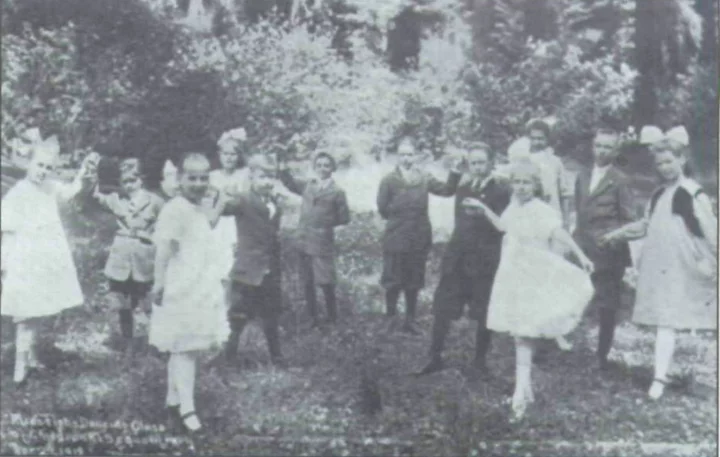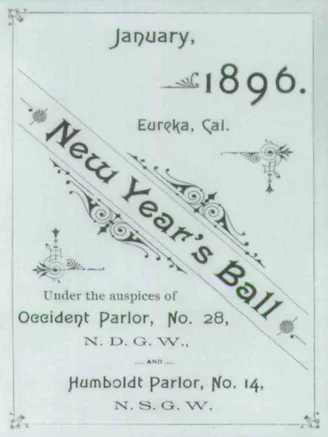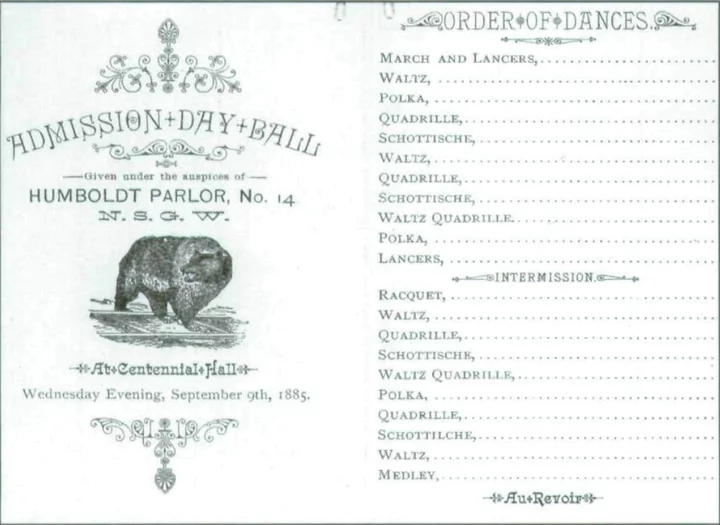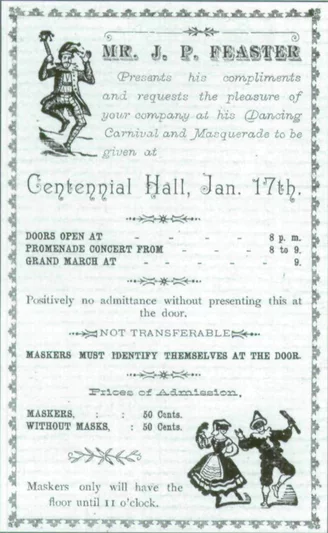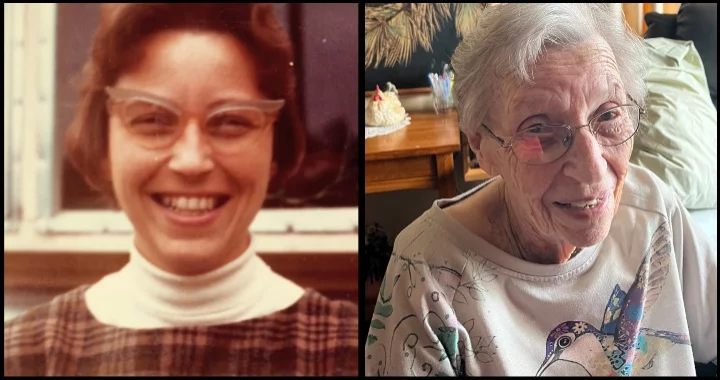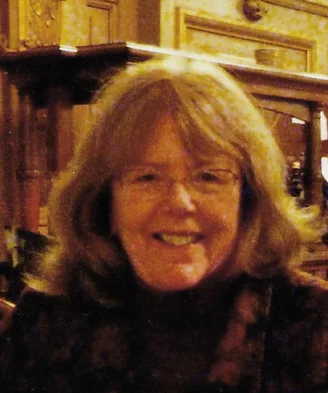OBITUARY: Matthew “Matt” Chipps, 1950-2024
LoCO Staff / Monday, Jan. 6 @ 6:56 a.m. / Obits
Matthew
“Matt” Chipps was born in San Francisco, on September 2,
1950, and passed away in Eureka, on December 29, 2024.
After growing up in San Mateo, Matt served with the US Coast Guard abroad, including a tour of duty in Vietnam, and ended his service in Humboldt County. After his service, Matt began a career in the grocery business, first as a clerk, and worked until he became a manager. Matt then purchased Bonomini’s Market, followed by Cutten Family Market, Northcoast Catering and BBQ, and was involved in numerous businesses and rental properties in the greater Eureka area.
Matt was known as Uncle Matt to a collection of close friends and their families. He enjoyed working on his home in Eureka, his children’s homes, and attending family functions. Throughout the year, he could be found enjoying conversation and grilling on the deck, playing golf, taking the occasional hunting trip, and watching any sports, especially the 49ers and the Giants.
What most people didn’t get to experience, was the man his children called Dad. He was a kind man who raised his children to be honest, hardworking family people. He coached and sacrificed much of his time to ensure that those around him could enjoy a great life. Matt was a selfless man who valued his family and experiences over material things, and instilled this same trait in his family so that a legacy of love and friendship would be passed on.
Matt is preceded in death by his father, William “Clay” Chipps, mother, Phyllis Betty DeSchane, and his sisters, Marjorie “Jo” Parnello (Sacramento) and Diana Wertkin (Ben Lomond, Calif.).
Matt is survived by his sons Joshua Chipps and wife Jenn Kennedy (Campbell, Calif.), Bryan Chipps and wife Keri Chipps (McKinleyville), Clayton Chipps and partner Jamelle Dube (Eureka), and two grandchildren Brylynn Chipps and Kolby Chipps (McKinleyville).
The Chipps family would like to thank his care teams, too numerous to list who have been instrumental in his comfort and happiness in the last few years, and all of his friends near and far who’ve kept him and the family company.
Matt requested that there be no services. The family asks that anyone who knew Matt who may want to send a gift or flowers, instead recognize the support provided by Hospice of Humboldt and Palliative care teams by making a donation to Hospice of Humboldt in his memory at https://www.hospiceofhumboldt.org/
###
The obituary above was submitted on behalf of Matt Chipps’ loved ones. The Lost Coast Outpost runs obituaries of Humboldt County residents at no charge. See guidelines here. Email news@lostcoastoutpost.com.
BOOKED
Today: 4 felonies, 3 misdemeanors, 0 infractions
JUDGED
Humboldt County Superior Court Calendar: Today
CHP REPORTS
0 Sr299 (RD office): Trfc Collision-No Inj
Mm101 N Dn 36.20 (HM office): Traffic Hazard
6100 Hwy 101 N (HM office): Assist CT with Maintenance
1656 Union St (HM office): Missing Elderly
ELSEWHERE
Governor’s Office: Governor Newsom’s SAFE Task Force partners with Long Beach to address encampments
KINS’s Talk Shop: Talkshop December 8th, 2025 – Michael Davis-Hughes
County of Humboldt Meetings: Human Rights Commission Agenda - Hybrid Meeting
Governor’s Office: Governor Newsom helps provide more than a thousand Californians with homes
TINY FOOTPRINTS: Wipe It Clean(er) in the New Year!
Ashley Thomas / Sunday, Jan. 5 @ 7 a.m. / Tiny Footprints
Image: Stable Diffusion. (Which runs on a normal in-house machine, not in a big server farm.)
I’m talking about the environmental impact and usefulness of paper towels. And their alternatives.
Now don’t get me wrong — I believe there is a time and place for paper towels. When one of my cats ejects blades of grass and wet food onto my floor, I reach for a paper towel with zero remorse. That’s a truly appropriate time for single use, right? But many of us lean heavily onto paper towels for convenience. I grew up on paper towels and didn’t realize there was another way until I was an adult. But why does it matter? I’d be happy to tell you.
It takes about 17 trees to create one ton (about two thousand rolls) of paper towels. Then we must consider the water that went into nurturing those trees before they were harvested (around twenty-thousand gallons for the above amount). By the time they hit the store shelves, they’ve already had an impact on the environment.
But beyond that, it’s estimated that they create between 7 to 13 billion pounds of waste each year in the US alone, depending on the source. Much of that ends up in landfills, taking up valuable space in our dystopian mountains of garbage.
Fortunately, there are ways to reduce the harm associated with wiping things clean.
- Use rags and dish towels instead: If you already have them in your possession, these are the better option for wiping things down. The great thing about them is you can use them over and over. Divide them into those that are more presentable, and those that are stained beyond belief. I use the “nice” ones to hang for drying my hands. The others are stashed in a cabinet, handy for wiping down counters, sopping up spilled drinks, and dusting. When they’re appropriately filthy, toss them in your hamper and throw them in with the laundry.
- Make your own rags: No need to buy anything new. If you don’t have enough to satisfy your needs, you can cut up old shirts, bedsheets, or towels. Those who are handy might opt to sew the edges to keep them from fraying. Fold them up into little squares and you’re good to go.
- Compost paper towels when possible: Many folks believe paper towels are recyclable. They are unfortunately wrong. On the bright side, you can compost them in many cases. If you’re wiping down most food products or using environmentally friendly cleaning sprays, then you’re fine to chuck them in the green bin. But if they come into contact with meat, oil, grease, butter, chemicals, or waste from living creatures, harmful pathogens or bacteria could get into the compost. These are best exiled to the landfill.
- Invest in recycled paper towels: There are tons of brands that sell 100% recycled paper towels these days. And if you’re using them less often, it can offset the fact that they’re a little pricier.
Life is messy! But cleaning it up doesn’t have to create unnecessary messes in our environment. Fewer paper towels mean less waste and more trees, and I think that’s something most of us can agree is better for everyone.
###
Ashley Nichole Thomas is a marriage and family therapist who’s passionate about shrinking her carbon footprint. In her free time she writes fantasy novels, and remains unconvinced that fairies don’t exist.
Humboldt Special Olympics Seeks Community Support After New Year’s Day Break-In at Storage Facility
LoCO Staff / Saturday, Jan. 4 @ 1:24 p.m. / Community , Crime
Image via GoFundMe.
###
Press release from Humboldt Special Olympics:
Humboldt County Special Olympics is devastated to announce that our equipment storage unit was broken into on New Year’s Day around 1:00 am. Essential sports equipment, uniforms, and vital supplies for supporting our athletes and program activities were stolen.
This theft strikes at the heart of one of our most vulnerable communities. Special Olympics provides a safe, empowering environment for individuals with intellectual and developmental disabilities, allowing them to thrive through sports, camaraderie, and inclusion. Stolen items are essential to maintaining the programs that inspire and uplift our athletes.
This incident represents a significant loss for our program. Items stolen include first-aid kits, uniforms, pop-up tent canopies, travel bags, softball helmets, swimming gear, and our beloved Special Olympics torch. Unfortunately, replacing the stolen items is a significant financial burden, and we currently lack the funds.
We are urgently appealing to the community for assistance—whether through donations, sponsorships, or spreading the word about this incident. No matter the size, every contribution will help restore the resources needed to continue supporting our athletes and their families. For donations, we have set up a GoFundMe account. You can contact us directly.
We are also asking for the community’s help in bringing the perpetrators of this crime to justice. If anyone has any information about the burglary or the stolen items, please get in touch with the Humboldt County Sheriff’s Office immediately at (707) 445-7251 (Case#: 2025-00028).
Thank you for standing with us during this challenging time. Together, we can rebuild and deliver critical health, wellness, and sports programs that change the lives of people with intellectual disabilities within our community.
HUMBOLDT HISTORY: Tripping the Light Fantastic — Or, the All-Night Dances and Masquerade Balls of Early Humboldt County
Suzanne Forsyth / Saturday, Jan. 4 @ 7:30 a.m. / History
Miss Fish’s dancing class poses for a photograph in Sequoia Park on April 27, 1918. Ruth Brown (Chapman) is at far right. Images via the Humboldt Historian.
Rain fell, wind blew, and muddy rivulets flowed down Eureka’s streets on the night of December 22, 1893. Nevertheless, drenched horses and buggies kept pulling up in front of the brightly lit Russ Hall, which by nine o’clock was filled with “clowns cutting all kinds of capers, flower girls, dancing girls, and ladies from oriental regions frolicking gaily with old tars and dudes galore.” Welcome to an early-day masquerade ball!
At eleven o’clock on this night the masks were removed and the capering “Clowns” revealed to be Messrs. Ricks and Falk; the elegant “Birds of the Forest” to be Ivy Cutten; and the mysterious “Stranger” to be P. Stiger. According to the next day’s Eureka Nerve: “The floor was now at the disposal of all who cared to trip the light fantastic, and when the music of the Ideal Orchestra again pealed forth ‘with its voluptuous swell’ there was no end to the merriment until the wee sma’ hours.”
The Victorian-era ballroom exerts a certain fascination,perhaps because events there are always prefaced with the word “grand.” In a dreamy moment, we may even imaginatively transport ourselves to one of these grand balls, where of course we have striking figures, dashing attire, and expert knowledge of all the dances. In fact, this last attribute may well have been true. Male or female, had we grown up in Humboldt in the early 1900s, we probably would have learned to dance as children at Miss Fish’s dance academy in Eureka, or at Professor Gustin’s dancing school — though as ten-year-olds we may not have viewed the opportunity in a romantic light. Dancing classes, held on Saturday afternoons, required ones best clothes and deportment.
Ruth Brown (Chapman) of Arcata was a young student of Miss Fish in 1918. Every Saturday she made the trip around the bay to Eureka with her friend Mary Brizard (Duke) in grandmother Brizard’s four-cylinder, seven-passenger Cadillac, chauffeured by long time Arcata resident Frank Anderson. Miss Fish and her assistant, Dorothy Heasman, taught the children the fox trot, waltz, two- and three-step, Virginia reel, Highland fling and more. After class, the Cadillac made what the girls considered its most important stop — at the Hinch, Salmon, and Walsh grocery store where, in Ruth’s words, “We bought the biggest, most delicious homemade cream puffs we had ever eaten.”
Dancing was central to social life in these early days, and if a fellow didn’t have the opportunity to take lessons as a youngster he might seek them out on his own as a teenager, as did Rudolph Hipp of Eureka in the early 1900s. At age fourteen, Hipp signed up for dancing lessons with Professor Gustin, who had a dancing school in Russ Hall at Third and G Streets in Eureka. Gustin is listed as a dancing teacher in the county directories as early as 1902 and as late as 1917. With his tall, graceful bearing, his swallowtail coat, and his impeccable manners. Professor Gustin recalls Charles Dickens’s iconic Victorian dancing master, the nimble Mr. Turveydrop, always seen “in the full luster of his deportment.”
When the music started. Professor Gustin showed the boys how to cross the room graciously and ask the girls on the other side, “May I have the pleasure of this dance?”’ He taught the waltz, two- and three-step, quadrille, and lancers.
Once equipped with the necessary steps and deportment, Rudolph Hipp joined his fellow Humboldters in attending dances all over the county. Even on ragged winter-time roads, folks eagerly traveled from outlying towns to Eureka’s well-appointed halls, like Loheide’s on 5th Street, where the Winter Night Social Club balls were held. Conversely, Eurekans headed out of town to the open-air dances at Scotia, Blue Lake and Rohnerville. In the summertime, everyone jumped on a Coggeshall and Cousins lumber scow, offered for the day to dancers and picnickers, for a ride to the big dance pavilion at New Era Park in Fairhaven.
Most intoxicating to read about for the would-be time traveler are Humboldt’s masquerade balls of the 1880s, 1890s, and early 1900s, especially popular during the winter holidays. These balls began at 8 or 9 p.m. with the grand march. Maskers promenaded through the hall showing off their wondrous costumes, while a hundred or more spectators — those of less fortunate stations and means — looked on from the gallery and sidelines and endeavored to guess the true identities of the maskers. But costumes were more than just ornate garments: They indicated specific characters from “Queen Elizabeth” to “Hayseed,” which the maskers would “put on,” endeavoring to sustain their characters as long as possible through the night.
Where did these extravagant costumes come from? When a masquerade ball was announced, local merchants, such as McLaren’s music store in Eureka, would order costumes from San Francisco, and they would arrive on steamships at Eureka’s docks. At a mask ball at Buhne’s Hall in the early 1880s, Mrs. McLaren, who may have enjoyed first choice of costumes when they were unpacked in the McLarens’ shop, arrived as “Gypsy” in a “Turkey red dress with black sash and cap.”
Costumes, of course, can provide an exhilarating sense of freedom, and this must have been especially true for women in the strait-laced 19th century. The masquerade ball was a chance for a respectable woman to let down her hair, as Mrs. G. F. Roberts did at Buhne’s Hall when she dressed as “Folly” in a “short pink dress trimmed in black silk points and bells, bullion fringe and black lace, a Foily cap of black and pink silk, and hair flowing.” One feels certain that Mrs. G. A. Knight enjoyed herself that same evening as “Jockey Girl,” in a “short white skirt, blue silk basque trimmed with blue fringe, puffed bosom, high boots, horse shoes, and a whip.” And Miss Garrie Pratt gave herself ample opportunity to cavort when she assumed the role of “Dolly Varden,” the flirtatious and flashy Dickens character from Barnaby Rudge. Her lively costume featured a “short red skirt trimmed with black velvet, blue stockings, and big boots.”
What costumes and characters did the men inhabit on this occasion? Theodore Minor of Arcata was “Romeo” in a “black velvet frock trimmed with silver, white tights, and black cap with an ostrich plume.” W. J. McNamara was “Shylock” in a “purple turban trimmed with white, purple coat, red balloon pants, and a fierce mask.” Herbert Butterfield was “Spanish Lord” and Henry Buhne was “Red Devil,” while Harrison Jones and Fred Inman were “clowns,” M. S. Taylor was “Dunce” and F. H. Gibson was “Harlequin.”
Men also relished the chance to cut loose, dressing as clowns, monkeys, devils and drunkards. The many fine points of ballroom etiquette, listed below, must have been difficult to adhere to while enacting some of these comical characters.
A high point of every masquerade ball came at 11:00 p.m., when masks were removed, identities revealed, and prizes awarded. At the April 18, 1892 Grand Masquerade Ball at Armory Hall in Eureka, with music by tbe 10th Battalion Band, the prize for best dressed lady and gentleman went to Mrs. Heber as “Moorish Princess” and Charles Jackson as “King Philip,” while the most original character award went to Joseph Meyers as “a candidate for the home of the inebriate.”’ At the Thanksgiving Masque Ball in 1893, also at the Armory and attended by four hundred people, Asa Stemmons as “Old Soak” won a pair of gold cuff buttons for the best sustained character, and Mrs. M. Minard won a silver plush jewel casket for her costume, which, reports the Nerve, “would consume more space than is available to describe.”
After prizes came a midnight supper. For dances at the Armory, hot chicken and turkey suppers were served across the street at the Grand Hotel at tables serving two hundred guests at a time. After supper, dancing resumed until 4:00 a.m. Admission prices to an 1892 ball at the Armory were as follows: “Gents, $1; ladies in costume and mask, free; spectators, gents 50 cents, ladies & children, 25 cents.” Supper was fifty cents per plate.
Inevitably, rowdies were attracted to dances no matter where they occurred in Humboldt County. The Union’s report on the Christmas Eve Ball at the Trinidad Town Hall in 1900 expresses amazement that “everything passed off pleasantly, the absence of everything approaching hoodlumism being remarkable.” The announcement in the Humboldt Standard for the 1992 Easter night masquerade ball at Armory Hall proclaims: “A policeman will be in attendance to keep out disreputable characters, as this must and shall be a select and grand masquerade ball.”
For security purposes, special invitation cards were required for admittance to the ballroom. These passports to grandeur could be acquired by “all respectable ladies and gentlemen” at the shops, like McLaren’s or Dayton’s music stores, where one rented one’s costume. But invitation cards could fall into the wrong hands; interlopers, hidden behind masks, could walk in undetected. Therefore, at some masquerade balls, guests could not gain entrance to the ballroom until they first passed through a private entry room, where a floor manager discreetly checked their true identities.
Humboldt County dances continued to be central to community life right up through the 1950s. But the golden age oí masquerade balls with their grand marches, midnight suppers, and dancing until 4:00 a.m. seems to have come to an end as the twentieth century got underway. As the population grew beyond the scope of everyone knowing everyone else, and community life became more complex, a need for boundaries and regulation was voiced. In 1915, a dance hall ordinance was adopted in Eureka which prohibited the attendance at dances of unchaperoned girls under age sixteen, and forbade public dances to run after midnight without a special permit from the mayor.
But once upon a time on the Humboldt frontier, masquerade balls held sway. These extravagant affairs attracted just about everybody, from the social elites to the simple ordinary folk. Each ball, after all, brought a fresh chance to adopt a new persona. One must decide what one will become — queen or gypsy, king or clown, knight or inebriate?
###
SIDEBAR: The Etiquette of the Ball
Most early-day households had an etiquette book at the ready. These rules of ballroom etiquette are from Hill’s Manual of Social and Business Forms by Thomas E. Hill, published in 1881. The book, now on file at HCHS, is from the home of a 19th century Humboldt County family.
No gentleman should play the clown in the ballroom. Dancing a break down, making unusual noise, swaggering, swinging the arms about, etc., are simply the characteristics of the buffoon. A gentleman who goes to a ball should dance frequently; if he does not, he will not receive many invitations afterwards; he is not invited to ornament the wall and “wait for supper.”
Ladies will consult their own pleasure about recognizing a ballroom acquaintance at a future meeting.
No gentleman should enter a ladies’ dressing room at a ball. It is not necessary to bow more than once, though you may frequently meet acquaintances upon the promenade; to bow every time would be tiresome.
No gentleman should use his bare hand to press the waist of a lady in the waltz. If without gloves, carry a handkerchief in the hand.
No gentleman whose clothing or breath is tainted with the fumes of strong drink or tobacco, should ever enter the presence of ladies in the ballroom.
When the company has been divided into two different sets, do not attempt to change from one set to the other, except by permission of the master of ceremonies.
Ladies should not be allowed to sit the evening through without the privilege of dancing. Gentlemen should be sufficiently watchful to see that all ladies present are provided with partners.
###
The story above is excerpted from the Winter 2008 issue of the Humboldt Historian, a journal of the Humboldt County Historical Society. It is reprinted here with permission. The Humboldt County Historical Society is a nonprofit organization devoted to archiving, preserving and sharing Humboldt County’s rich history. You can become a member and receive a year’s worth of new issues of The Humboldt Historian at this link.
OBITUARY: Margie Joan Prash Jensen Craig, 1935-2024
LoCO Staff / Saturday, Jan. 4 @ 6:56 a.m. / Obits
Margie passed away peacefully at her home on October 11, 2024. She was born February 27, 1935 in Renton, Washington. She attended Renton Grammar school and Eatonville high School until 1952, when the family moved to Blue Lake to work in the booming logging industry. Margie finished high school at Arcata High School and soon married Albert Francis Jensen (Fran) and raised four children: Monica, Jerry, Karl and Dana.
She was a homemaker until 1972, when she went to work for Miller Farms in the potato fields. From there she went to the florist shop, making and delivering bouquets and floral arrangements until the department closed. Margie continued her work with Miller Farms in the nursery, where she served for over 30 more years, and where she made a name for herself as “Margie,” the Miller Farm’s Nursery expert. After divorcing Fran in 1974, She was single until her sister Maxine Harnden and brother-in-law Pete Harnden set up on a double date with their widowed friend, Ken Craig. Margie and Ken were married in 1982 and she moved from Blue Lake to Arcata, where she lived with Ken until his passing in 1997.
Margie was active in the Blue Lake community, where she belonged to the Wha-Nika Club, Chamber of Commerce, and supported the skating program located at Prash Hall, which was named after her father. Margie was a civic-minded person who gave to her community, sewing Christmas stockings for students since 1998. She had a fond love of dogs and supported the Arcata Police Department’s K-9 unit since its beginning.
During her leisure time, she enjoyed jigsaw puzzles and needlework. Her green thumb transferred from her experience in the nursery at Miller Farms to her home where she always had a flourishing garden. Margie enjoyed spending warm summer weekends with family at her son Karl and her daughter-in-law Tedi’s property in Redwood creek where she would lounge in her swinging chair overlooking the meadow and enjoy Janet Evanovich novels and naps.
Margie is preceded in death by her son Jerry Jensen (lost at sea in 1972), father Victor A. Prash (lost at sea in 1972), nephew Kim Harnden (lost at sea in 1972), mother Emma Prasch, husband Kenneth Craig, sister Doris Keblebek and brother-in-law Robert Keblebek, and brother-in-law Pete Harnden. She is survived by her children Monica Roorda and husband Bill of Gilroy, son Karl Jensen and wife Tedi of Blue Lake, son Dana Jensen of Blue Lake, Daughter-in-law Sheri Jensen of Eureka, grandchildren Jonathan, Breanna and Darby Roorda, Nicole and Kyle Jensen, Jenna Sutton and Joshua Jensen, great grandchildren Ryder, Kolton and Kenna Jensen, Abbie, Hunter, and Bryson Sutton. She is also survived by her sister Maxine Harnden, niece Vicki Hutton, nephew Randy Harnden, nephew Robert Michael Keblbek and family.
As per her request there will be no services. In lieu of flowers or cards please make a donation to:
Arcata
Police Department K-9 Unit
736 F Street
Arcata,
CA 95521
###
The obituary above was submitted on behalf of Margie Craig’s loved ones. The Lost Coast Outpost runs obituaries of Humboldt County residents at no charge. See guidelines here. Email news@lostcoastoutpost.com.
OBITUARY: Homer (Pete) William Baker, 1940-2024
LoCO Staff / Saturday, Jan. 4 @ 6:56 a.m. / Obits
It is with deep sadness and
heavy hearts that we announce the passing of a beloved husband,
father, brother, son, uncle and grandfather. Homer (Pete) William
Baker was born on May 3, 1940, and peacefully departed from this
world in his home on December 22, 2024. He will be profoundly missed.
Pete’s journey began in Michigan, where he was the third youngest of eight siblings. In 1943, at the age of three, his family relocated to Humboldt, setting the stage for a life filled with hard work and dedication.
As a young man he found employment at Sierra Pacific, where he dedicated many years of service. A workplace accident led to the loss of parts of three fingers, yet Pete embraced humor, regaling listeners with fantastical tales of how he sustained his injuries — from encounters with bears and sharks to mischievous dogs. He retired from Sierra Pacific in 2007.
In the course of his life, Pete fathered a son and daughter with his first wife. However, it was in 1983 that he met Rose, the love of his life. They married in 1984 and soon bought property on Humboldt Hill, where together built a warm and welcoming log cabin that became a sanctuary for family and friends. Pete joined Rose on her foster care journey during the build of their cabin. Together they opened their hearts and home, where to this day they have fostered over 500 children, alongside adopting six children of their own. Their log cabin became a haven where anyone who entered felt embraced by love and kindness, often becoming a cherished place for former foster children to return to for holidays and special occasions.
Tragedy struck in 1988 when Rose’s son, Glenn, was diagnosed with cancer. He fought hard to beat the cancer with a smile on his face, ultimately it took his life at the young age of 19. After their tragic loss, Rose and Pete dedicated their lives to the foster care system and to being a resource for foster parents locally, and nationally.
Pete cherished the simple pleasures in life: dancing with Rose, camping adventures with his trailer, mowing the lawn, reading Louis L’Amour novels, and watching classic westerns. Above all, the love he held for his children, grandchildren, and great-grandchildren is what drove him.
Pete is survived by countless family and friends, too numerous to list.
In accordance with his wishes, Pete will be cremated. A celebration of his life will be held on January 11, 2025, at 11 a.m. at Life House Church, located at 2743 Hubbard Lane in Eureka. All who wish to honor Pete’s memory are invited to attend. In lieu of flowers, the family requests donations be made to either Youth Ability Inc. or Parents in Training Inc., PO Box 6644, Eureka, CA 95502.
###
The obituary above was submitted on behalf of Pete Baker’s loved ones. The Lost Coast Outpost runs obituaries of Humboldt County residents at no charge. See guidelines here. Email news@lostcoastoutpost.com.
OBITUARY: Patricia Jane Chaney, 1944-2024
LoCO Staff / Saturday, Jan. 4 @ 6:56 a.m. / Obits
Pat
died on December 20, 2024, after a long bout with heart, kidney, and
diabetes problems.
She was born on April 1, 1944, in Camden, New Jersey. Her parents were Florence Martha Robinson (nee Tufnell) and Samuel Robinson. Pat attended grade school in Camden, New Jersey, before moving to California with her parents after high school.
In California, she attended and graduated from Long Beach State with a degree in Russian history and education. In addition, she took several graduate classes. During her time at Long Beach State, she met her future husband, Ron, and they finally got together and married in 1984 after literally chasing each other around the world for 20 years. After graduation, she taught in the Rossmoor School system before later taking a position for nine years with the Department of Defense overseas school system. She taught first in the Philippines for a year, then in Germany for a year, followed by a year in Turkey. Then, to change things, she taught in the inner city schools in Washington D.C. for a year before going to Spain to teach for four years. She returned from Spain to care for her mother until she died in Southern California, after which she taught as a resource teacher in the Long Beach School District.
In 1984, she married Dr. Ronald Chaney and moved to Arcata, where he was a professor at Humboldt State University.
Never to stay quiet for long, she joined the Westhaven Women’s Club and eventually became its president. During this time, she also taught at Morris Elementary School in McKinleyville as a resource teacher while being a member of six different garden clubs. For several years, she was a co-presenter on a KINS cooking show.
Over her life, she traveled to 69 other countries. With her husband, she made four academic trips to the People’s Republic of China (PRC) and one to Tibet as guests of their governments. In 1989, she was in Shanghai during the Tiananmen Square protest in the PRC. In addition, together, they made many return trips to Europe, Asia and the Middle East.
Pat was an avid gardener, book reader, gourmet cook, party giver, and bridge player. She loved her dogs, Gretchen and Lucky Ducky. In her spare time, she also arranged flowers for the Eureka Symphony. Her last bridge game was held the day before she died unexpectedly. Pat is survived by her sister, Arlene Kemeny, and her husband, Jack; her niece, Lisa Fody; her husband, Ed Fody; their daughter, Samantha; and son Chris. She is also survived by her husband, Ron Chaney, of 40 years old. She will be terribly missed. You left us too soon. A memorial service will be held at Paul’s Chapel on January 18, 2025, at 1 p.m.
###
The obituary above was submitted on behalf of Pat Chaney’s loved ones. The Lost Coast Outpost runs obituaries of Humboldt County residents at no charge. See guidelines here. Email news@lostcoastoutpost.com.




